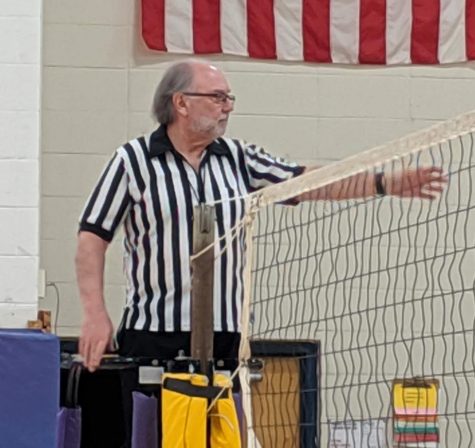APRIL FOOLS: How to Solve Our Spring Break Crisis
Something dreadful is coming. Something so gruesome and horrid that its very mention sends teachers and students alike into a mad frenzy.
It sneaks into classrooms, under the doors and through the opened windows. Preparations are made, packets are assembled, and troops are rallied as it draws closer and closer. The whole school seems to shiver with anticipation, and at the final bell, all hell breaks loose. Students claw at the exit, sprinting out like caged animals. Papers lay strewn in the hallways, and teachers peek out of their doors, praying the stampede is over.
What could cause students to run screaming from the sanctuary that is school, the place where they are confined for six hours a day, five days a week? Why would they want distance from the constant work and stress that builds their character? Ladies and gentlemen, the sin in question is none other than… spring break.
Breaks bring out the worst in students. The Seven Deadly Sins manifest themselves in the innocent bodies of teenagers. I’ve witnessed it first hand, and it’s terrible! Without their normal hours of homework, teens are slaves to their deepest and darkest desires.
Access to free food at any time leads to bouts of gluttony, and ruinous social media apps fill every second of spare time. During breaks, students become lethargic and insist they need more sleep. I only see one plausible reason for this behavior; schoolwork provides necessary stimulation, and without it, teens become lazy sloths.
While family and friend time is nice, the cons highly outweigh the benefits. Resetting your body and mind and relaxing without the pressures associated with school steals time away from studying for the SAT and getting into college. However, there is one positive to breaks: homework. Although teens may grumble and groan about how homework over breaks defeats the whole purpose of a break, I ask them to reconsider.
Jenn Osen-Foss, an instructional coach for teachers, says “Over a long break, homework can be very good for students because it […] limits the loss (or ‘regression’) of new skills” (Osen-Foss). Homework over break is crucial in keeping teens tethered to school. Without it, our children would slowly rot away until there is nothing left.
In my mind, the problem with breaks lies not with the homework, but with the breaks themselves. Removing them all together is the only way to save our students, so I offer this simple proposal.
School will be in session from 8:00am to 2:35 pm, 364 days a year. There will be two teams of staff for each half of the year, as continuous work can cause burnout.
Students will attend their classes year-round, and when they return home, their studies will be monitored to ensure any stops are of the utmost necessity. For example, a camera and motion sensor will detect when the child leaves their seat, and they must explain why and for how long they will be leaving. Acceptable breaks include bathroom visits, short meals, and sleep.
The summer season is uncharted waters for our district, but a few small items should acclimate everyone to the climate. Air conditioners can be installed in the building and on buses. I understand this is a large financial expense, so until the funds are raised, each student will be provided with a misting water bottle to combat the heat. In order to raise said funds, the district can charge a $10 fee for absences. This way, there is a financial and educational incentive to come to school. I have budgeted one day off (I’m not a monster); this day should be used for doctors appointments, as teens’ health is very important to us.
Many benefits will come from this program. Rhinebeck could sponsor new summer sports and clubs for students who are ready to put more on their overflowing plates. Teens will become much more intelligent and virtuous; the sheer volume of work will destroy any chance to slack off, and all knowledge will be retained behind their glassy eyes. In today’s never-ending cycle of work, our school and students should reflect those same values.

